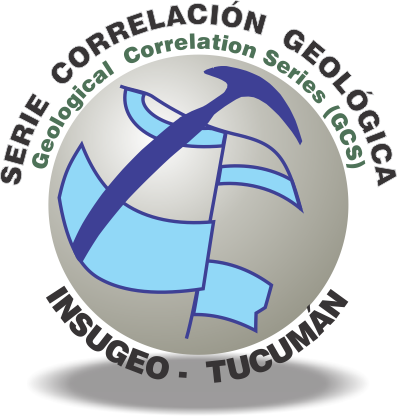Serie Correlación Geológica 40 (2)
Biostratigraphy based on trilobites from the Floresta Formation (Tremadocian) in Mojotoro Range (Salta) and its correlation with diverse units and localities of the Argentine Eastern Cordillera
Josefina Aris | Valeria Aquino | María del Huerto Benítez
Descargar trabajo en formato PDFResumen
BIOESTRATIGRAFÍA BASADA EN TRILOBITES DE LA FORMACIÓN FLORESTA (TREMADOCIANO) EN LA SIERRA DE MOJOTORO (SALTA) Y SU CORRELACIÓN CON DIVERSAS UNIDADES Y LOCALIDADES DE LA CORDILLERA ORIENTAL ARGENTINA. Se analiza aquí la fauna de trilobites de la Formación Floresta (Tremadociano) en el sector medio de la sierra de Mojotoro con el objetivo de realizar la interpretación bioestratigráfica de la unidad. Se analizaron cuatro secciones que, de norte a sur, son: quebrada de la Virgen del Cerro, quebrada de Tres Cerritos, Villa Floresta y Finca Miraflores. Se identificaron 18 especies agrupadas en asociaciones en función de su procedencia estratigráfica y geográfica. Se reconocieron con certeza las Biozonas de Kainella meridionalis y Bienvillia tetragonalis mientras que se enuncia con dudas la presencia de la Biozona de Kainella teichii. Se pone en duda si la Biozona de Notopelthis ortomethopa pertenece a la Formación Floresta o a niveles basales de la Formación Áspero. Así mismo, se realizan correlaciones bioestratigráficas para otras áreas de la Cordillera Oriental argentina. De acuerdo al esquema bioestratigráfico vigente a base de trilobites para el Tremadociano, se interpreta que esta unidad litoestratigráfica se habría depositado entre finales del Tr1 y el Tr2.
Abstract
The trilobite fauna of Floresta Formation (Tremadocian) in the middle part of Mojotoro range is studied here with the aim to make a biostratigraphic interpretation. Four sections were analyzed, which from north to south are Virgen del Cerro creek, Tres Cerritos creek, Villa Floresta, and Finca Miraflores. 18 species were identified and grouped into four associations considering their stratigraphical and geographical procedence. It’s recongnized with certainty Kainella meridionalis and Bienvillia tetragonalis biozones. Kainella teiichi were identified with doubts. It is questioned whether Notopelthis ortomethopa Biozone really belongs to Floresta Formation or, instead, corresponds to basal levels of Áspero Formation. In addition, a biostratigraphic correlation is carried out between Floresta Formation and other lithostratigraphic units from diverse areas of argentine Eastern Cordillera. Considering the current biostratigraphic scheme for Tremadocian based on trilobites, it is interpreted that Floresta Formation would be deposited during the end of Tr1 and Tr2.






